As the days get warmer and the sun shines brighter, nature is gearing up for another busy summer season. Among the countless creatures that will emerge from their winter hiding spots are the industrious and fascinating ants. Michigan, in particular, is set to experience a surge in ant activity this summer, as several types of these tiny yet mighty insects are expected to make their presence known. So, get ready to witness the impressive types of ants set to emerge in Michigan this summer.
Bearded Carpenter Ant (Camponotus subbarbatus)
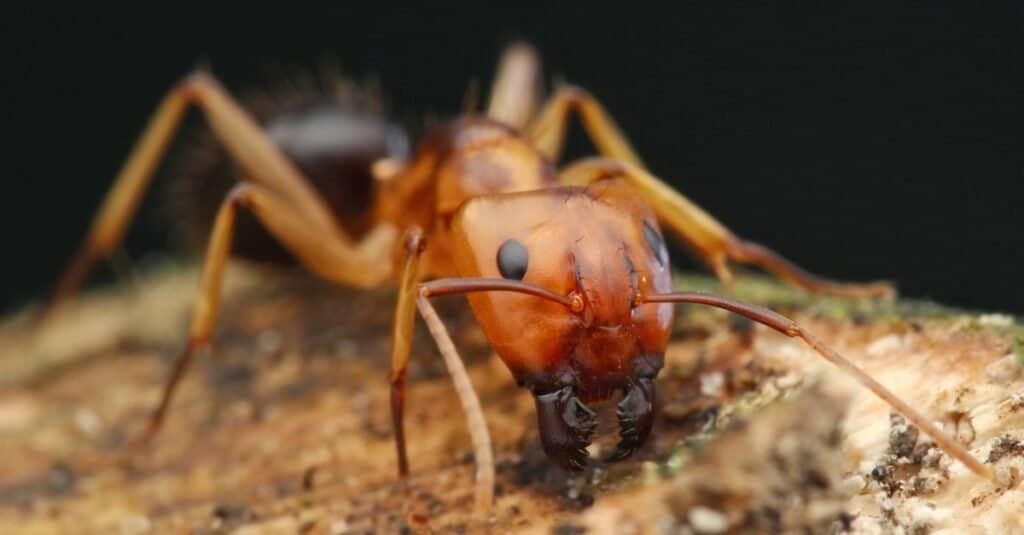
©Waffa/Shutterstock.com
Belonging to the family of Formicidae, bearded carpenter ants are a familiar sight during summer in Michigan. The ants’ elongated, slender bodies are easily recognized by their distinctive facial hair. They usually have dark brown to black bodies with yellowish-brown legs.
These ants can be found in various forested habitats in Michigan, such as open woodlands and dry upland forests. They are also known to make their nests inside buildings, attics, and walls. These ants benefit the ecosystem because they help control other pest populations, keeping damage to trees and plants at a minimum.
Bearded carpenter ants have a varied diet, feeding on insects like flies, aphids, and caterpillars. They also enjoy sweet foods like tree sap and honeydew.
The bite of a bearded carpenter ant can be quite painful due to the formic acid it injects, leading to itching, redness, and swelling. However, allergic reactions are rare.
Bearded carpenter ants in Michigan spend the winter season in a dormant state, like most other ant species. However, in late April, as the temperature starts to rise, these ants emerge from their nests and become active again. They continue to be active throughout the summer, and as temperatures drop around in September, they return to their nests.
Tennessee Thread-Waisted Ant (Aphaenogaster tennesseensis)

©Kessler Bowman/Shutterstock.com
The Tennessee thread-waisted ant is one of the types of ants set to emerge in Michigan this summer. It derives its name from its slender waist situated between the thorax and abdomen. Typically, these ants measure about half an inch in length and have reddish-brown bodies with a distinct yellow band across their back.
The queens are almost entirely smooth, lacking any apparent sculpture, and possess long spines at the end of their propodeum, which are quite noticeable due to their blunt tips.
Aphaenogaster tennesseensis has a strong inclination towards consuming nuts, especially peanuts, and pecans. However, almonds and cashews are also among their preferred treats. On some occasions, these ants feed on germinating seeds. Interestingly, colonies have been observed eating dead isopods and queens of other ant species.
During summers, these ants are most active and can be found in gardens, woodpiles, and sidewalks. They can often be seen near windows or doorways.
The Tennessee thread-waisted ant has robust jaws capable of delivering a painful bite when it feels threatened.
Typically, the Tennessee thread-waisted ants are more active in warm weather, and their presence can be observed in Michigan from around May. These ants usually go back to their nest before the onset of fall in early September. Nevertheless, it is not unusual to spot these ants during the early spring and late fall as well.
Yellow Shadow Ant (Lasius umbratus)
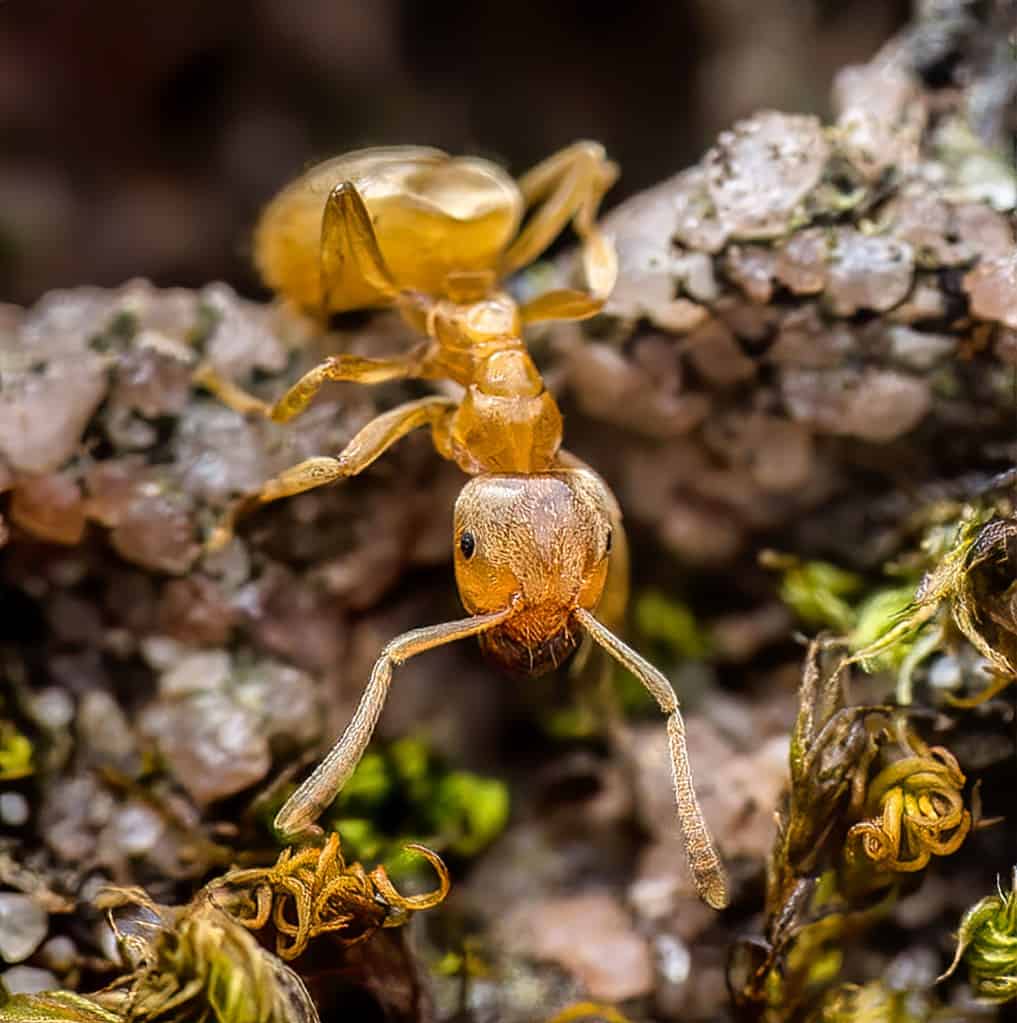
©iStock.com/Wirestock
The yellow shadow ant has spread to various regions worldwide, including Michigan. These social insects create extensive colonies, hosting hundreds or even thousands of members.
They exhibit a yellowish to light brown appearance and are recognized for their dynamic foraging habits, consuming a diverse range of food like other insects, nectar, and aphid-produced honeydew.
This adaptable species occupies a variety of environments, such as gardens, woodlands, lawns, and farmlands. The yellow shadow ant is mainly a subterranean creature, spending most of its time below ground. As a consequence of their underground existence, their eyes are comparatively smaller than those of other ants.
This ant is just one of the many types of ants set to emerge in Michigan this summer. The yellow shadow ant’s typical mating season occurs from late July to early August, making it the perfect time to observe these fascinating insects. During this period, young queens and males, assisted by worker ants, comes out of their nests. This species’ queens are known to mate with multiple males.
Little Black Ant (Monomorium minimum)
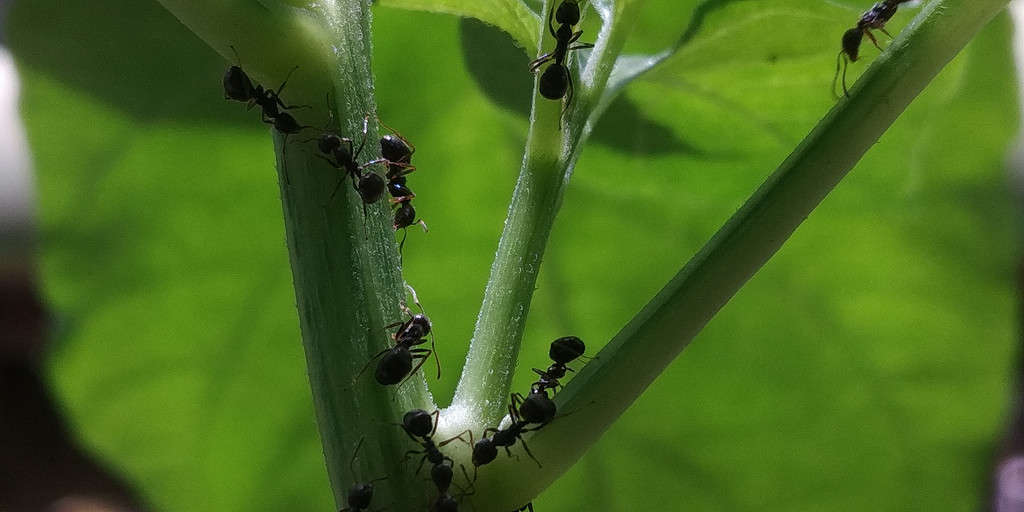
©iStock.com/Rahmat M Pandi
The North American native ant species, known as the little black ant, is one of the types of ants set to emerge in Michigan this summer. These ants are shiny black in color, with the workers measuring between 0.04 to 0.08 inches in length, while the queens measure 0.16 to 0.20 inches in length.
These little black ants generally have multiple queens within a nest. And a colony of these ants consists of a few thousand workers.
Monomorium minimum is a type of scavenging ant with a diverse diet, ranging from bird droppings to deceased insects. They also act as predators, targeting the larvae of codling moths and fall webworms. Although these ants can occasionally be found foraging inside households, they generally prefer to nest in soil mounds. Their diet also includes honeydew, which they collect from aphids, including the soybean aphid.
In the early summer in Michigan, the male and female queens of these little black ants engage in a special mating ritual called a nuptial flight. This is where they mate while flying in the air. After mating, the males die shortly afterward, while each queen begins the process of building a new nest, shedding her wings, and laying eggs. From the egg stage to adulthood, it takes approximately a month for the ants to develop fully.
Allegheny Mound Ant (Formica exsectoides)
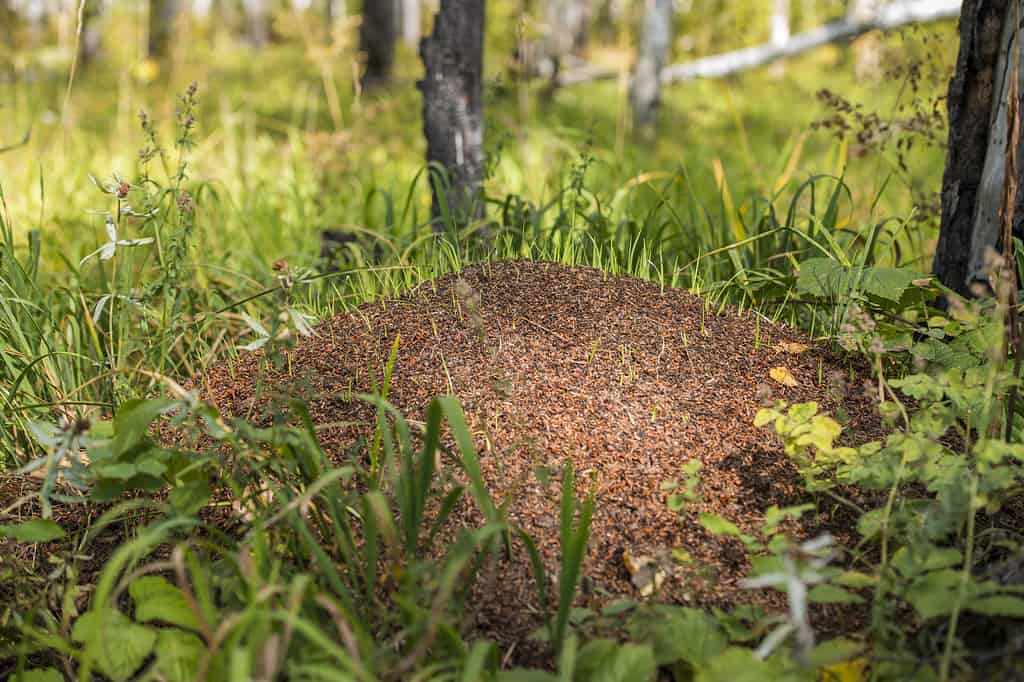
©iStock.com/markhonosvitaly
The Allegheny mound ant is a harmful species in Michigan that causes damage to plants within a 40 to 50-foot radius of their mounds. These ants are known to cause damage to plants by using formic acid or stripping the bark from trees and shrubs. It is one of the types of ants set to emerge in Michigan this summer that can become a problem.
These field ants build some of the largest mounds found in Michigan. They have a striking appearance with a red-orange head and thorax and a black-brown gaster. Allegheny mound ants are unique among most other ant species, as they have multiple queens within a colony.
When their mounds are disturbed, these ants will bite, though they are not generally considered aggressive. So act with caution when coming across these ants and their mounds.
In Michigan, Allegheny mound ants are commonly found in wild blueberry fields, open forest areas, and old-field habitats. Their diet includes insects and honeydew produced by sap-feeding insects like aphids and scales.
The ants use a process called “budding” to create new colonies and expand beyond their original mound. The majority of new colonies emerge in late May and early June, swarming the land. The ants return to their mounds before the first frost arrives.
Pharaoh Ant (Monomorium pharaonis)
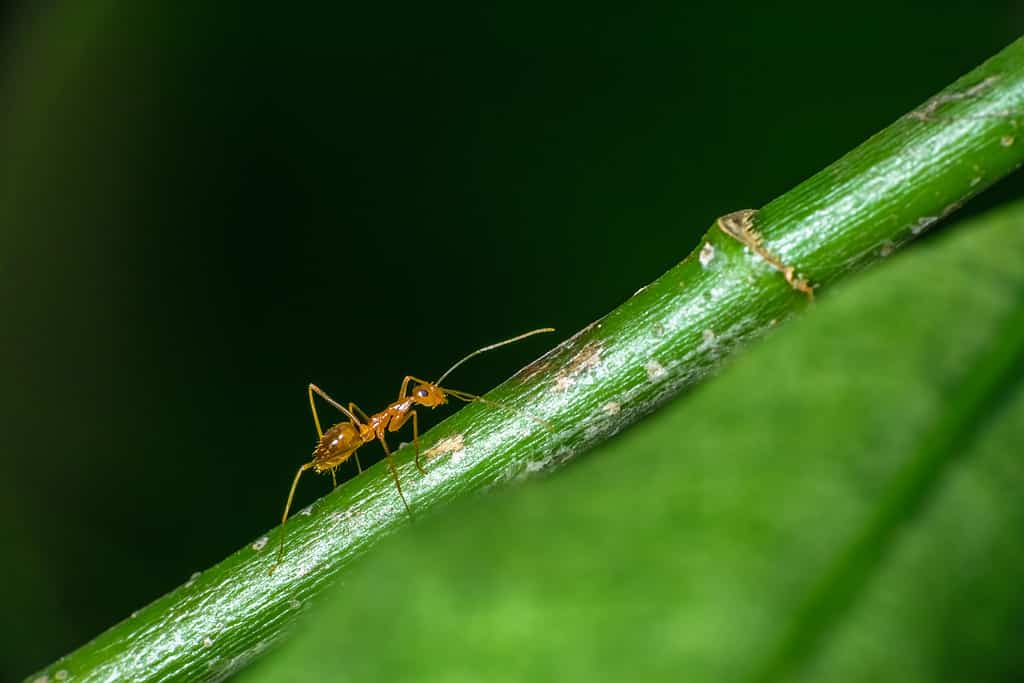
©iStock.com/Suman Ghosh
Pharaoh ants are a well-known indoor pest that can be particularly problematic in hospitals. This species of ant, which is nearly transparent, has been introduced to almost every corner of the globe.
Measuring between 1/16 and 1/12 of an inch, pharaoh ant workers are light yellow to reddish-brown in color and have darker abdomens. Their petioles have two nodes, and their thoraxes lack spines. These ants have non-functional stingers, which they use to generate pheromones.
Pharaoh ants are incredibly versatile in terms of their living environments, adapting to a wide range of habitats. In colder regions like Michigan, they tend to nest within homes, taking advantage of the warm, sheltered spaces between wall studs and insulation.
These ants are omnivores with a varied diet that reflects their adaptability. They feed on sweet foods like sugar, honey, and baked goods, as well as fatty or greasy foods such as butter, bacon, and liver. Surprisingly, they have even been known to be attracted to recently used medical bandages in hospitals.
During the winter, pharaoh ants are drawn to sources of heat, while in the spring and summer, they move toward the exterior walls of buildings. In Michigan, these ants typically appear in March and go into hiding around late October.
Other Insects Set To Emerge In Michigan
In addition to the types of ants set to emerge in Michigan this summer, let’s look at some of the other insects waiting to come out this summer in Michigan.
Black Flies (Simuliidae)

©iStock.com/zhikun sun
Black flies are sturdy insects with an arched thoracic region and a wingspan ranging from 0.2 to 0.6 inches. Their bodies come in various colors, with most species sporting a black hue, while others can be yellow or orange.
These annoying pests have short antennae and large compound eyes, and they inflict bites on humans that resemble those of mosquitoes, causing small red bumps that swell.
Although black flies can be found throughout the United States, they are prevalent in Michigan’s Upper Peninsula between late April and early September, with the peak season spanning from mid-May to mid-July. The season’s length is due to the sheer number of black fly species inhabiting the state.
Mosquito (Culicidae)

©Vinicius R. Souza/Shutterstock.com
Mosquitoes, the pesky insects that feed on human blood, are known for their slender bodies and long legs. They come in various sizes, but most species are less than 0.6 inches long and weigh less than 0.0001 ounces.
Female mosquitoes feed on human blood, leaving behind small, raised bumps on the skin after their bites. These bites are a common annoyance for many people.
In Michigan, mosquitoes typically emerge from late March to early November, with their peak season occurring in early July. Various factors, such as temperature and rainfall, affect mosquito activity and population.
Yellow Jackets (Vespula vulgaris)
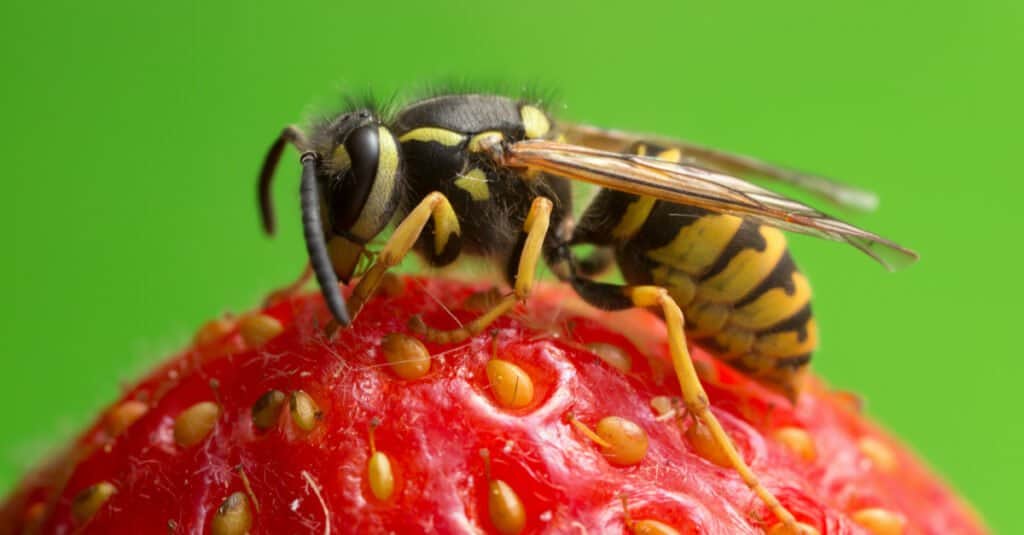
©Henrik Larsson/Shutterstock.com
Yellow jackets are a common wasp species that can cause problems in Michigan due to their tendency to nest in and around homes and structures. These flying insects, similar to bees, are known for their segmented bodies with narrow waists. While most species have black and yellow markings, some can also display white or red patterns.
Yellow jackets have a unique way of attacking humans, as they can bite before stinging. They can sting repeatedly and are considered a threat to humans as their stings can trigger severe allergic reactions.
Late June through early September is the peak season for yellow jacket activity in Michigan. According to Howard Russell, an entomologist at Michigan State University, these wasps can become more aggressive and confrontational towards the end of August and early September.
Japanese Beetle (Popillia japonica)
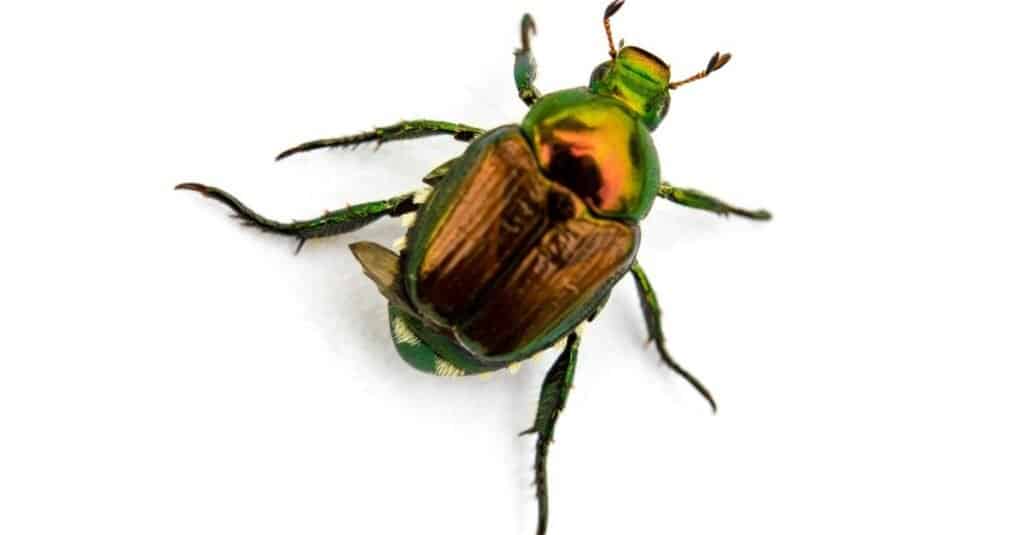
©enterlinedesign/Shutterstock.com
The state of Michigan is home to the Japanese beetle, a prevalent species. These beetles measure approximately 0.375 inches long and possess a vibrant, metallic green head and body, along with metallic brown wings.
An outbreak of Japanese beetles can cause significant issues since they feed on the leaves of more than 300 varieties of fruits, plants, and flowers. Furthermore, their larvae, commonly referred to as grubs, feed on the roots of turfgrass. However, Japanese beetles do not transmit diseases to humans or bite them.
In Michigan, adult beetles typically emerge during June or July and continue to feed all through the summer months. By the beginning of September, they retreat and return to their hiding places.
The post Discover the 6 Types of Ants Set to Emerge in Michigan This Summer appeared first on AZ Animals.
from Animal News, Facts, Rankings, and More! - AZ Animals https://ift.tt/M8brHli